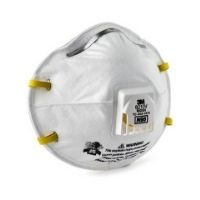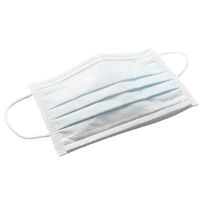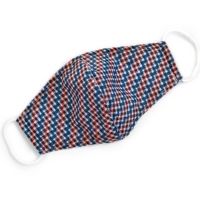There’s still a lot we don’t know about COVID-19 and the coronavirus that causes it. But in recent months, scientists and healthcare professionals have established some guidelines to help keep you safe and slow the spread of the disease.
Face masks have been a hot topic in the coronavirus conversation. We explore different types of face masks, how they work, how to wear them, and how they can help prevent the spread of COVID-19.
Do face masks slow the spread of coronavirus?
Hand washing and social distancing are your defenses against coronavirus while wearing a mask keeps you from getting others sick.
Coronavirus is a respiratory illness that hitchhikes on respiratory droplets from coughing, sneezing, and talking.1 Without a mask, these droplets can travel six feet or more and potentially infect others around you.
A cloth or fabric face mask can block these droplets and slow the spread. Face masks aren’t foolproof, but they can minimize dangerous airborne particles.
Essentially, the number of particles in the air decreases as the number of people who wear masks increases.
Types of face masks
In areas with limited space like elevators, stores, or offices, it’s important to wear a mask or cover your face to protect others. There are different types of masks, but some are less accessible.
If you aren’t a healthcare worker or don’t live with one, a cloth mask is sufficient. Here’s a rundown of other types of facial coverings.2

N95 respirator
An N95 respirator is a specialized device primarily used by healthcare workers. They’re fitted to the wearer’s face to create a seal to prevent small droplets from breaking the barrier.
But these masks are in high demand and short supply. So they’re mainly reserved for healthcare workers on the front lines in the battle against COVID-19. Thankfully, there are other options available for the general public.

Surgical mask
You’ve likely seen your doctor or dentist use a surgical mask. You know the ones—those loose-fitting disposable blue masks. A surgical mask can block larger droplets and splashes from sneezing or coughing but isn’t as effective against smaller particles.
But, like an N95 respirator, surgical masks are best left for healthcare workers who need them most.

Cloth mask
If you aren’t a healthcare professional, a cloth mask should provide enough protection for errands and public transportation. They’re widely available in stores, online, and are easy to make at home.
You can even find funky personalized patterns to make your cloth mask a little more stylish.
What to look for in a cloth mask
- Machine washable
- Multiple layers of fabric
- Snug fit over mouth and nose
And though cloth masks don’t create the tight seal found in N95 respirators, they can reduce the spread of COVID-19 when paired with social distancing and handwashing.
How should I wear my face mask?
Your face mask needs to cover your mouth and nose completely. Ensure the top of the mask sits comfortably on the bridge of your nose to prevent it from slipping.
When should I wear a face mask?
You should wear a face covering any time you go into public or leave your own self-isolation space. Indoor areas like grocery stores, hotels, or restaurants may have limited space for physical distancing. So be safe and wear your mask inside.
Masks aren’t as necessary for outdoor activities like walking, hiking, or hanging out at the park. But you should still wear a mask anywhere you can’t stay six feet away from others.
Guide to going out
Safer places and activities:
- Walks in the park
- Picnics
- Patio seating at restaurants
- Grocery shopping (with mask and social distancing)
- Airports
- Bars and nightclubs
- Gyms and salons
- Dining indoors or visiting friends indoors
Why should I wear a face mask?
Face masks keep respiratory droplets from spreading to others near you.
Most people with COVID-19 don’t show symptoms for several days after catching it. So you may have the illness and not know it. Or you could be asymptomatic and skip the signs entirely without knowing you have the virus. Basically, you don’t have to feel symptoms to spread the virus to others.
Wearing a face mask makes the environment around you safer and slows the spread of the coronavirus.
Many states have pushed a mask mandate for public areas. Has yours? Check your state to find out.
Do I need to wear a face mask even if I’m not sick?
Yes, face masks reduce the number of respiratory droplets in the air. Symptoms take up to 14 days to emerge in people with COVID-19 (if they appear at all). If you are asymptomatic, you could be a carrier of the virus without even knowing it.
Even if you haven’t tested positive for COVID-19 or come near someone who has, wearing a face mask reduces the risk of spreading the virus and is a courtesy to those around you during the pandemic.
How can I protect myself from coronavirus?
Start by staying home if you can. Avoid public spaces and close quarters with others. Don’t forget to wash your hands and use hand sanitizer before going into stores or other public places.
You should also avoid touching your own face, especially if you haven’t washed your hands.
In addition to hand washing and social distancing, wear your face mask when you leave the house. Get tested and self-isolate if you’ve come in contact with someone who has tested positive.
How to protect yourself from COVID-19:
- Wash your hands frequently.
- Avoid close contact with others.
- Cover your face, especially when coughing or sneezing.
- Clean and disinfect surfaces around you.
- Watch for symptoms and get tested if they arise.
What are the symptoms of coronavirus?
COVID-19’s most common symptoms include dry cough, fever, shortness of breath, muscle and body aches, and loss of ability to smell and taste.
What should I do if I feel symptoms?
If any of these symptoms arise, get tested at your local hospital or testing site. If you test positive and live with others, wear a mask indoors, stay away from housemates for 14 days, and use a separate bathroom if possible. If you live on your own, stay quarantined for 14 days.
If you test positive, healthcare workers will have further instructions for your recovery and spread prevention.
Sources (H3)
- Centers for Disease Control, “How COVID-19 Spreads,” June 2020. Accessed August 3, 2020.
- Lisa Lockerd Maragakis, M.D., M.P.H., Johns Hopkins Medicine, “Coronavirus Face Masks & Protection FAQs,“ July 2020. Accessed August 3, 2020.
- Mercey Livingston, CNET, “10 Activities That Expose You To Coronavirus, Ranked from Most to Least Risky,” August 2020. Accessed August 13, 2020.
- Centers for Disease Control, “How to Protect Yourself & Others,” July 2020. Accessed August 13, 2020.
The post Acceptable Face Coverings during the COVID-19 Pandemic appeared first on SafeWise.
from Blog – SafeWise https://ift.tt/3l4Rrmg
via IFTTT
No comments:
Post a Comment